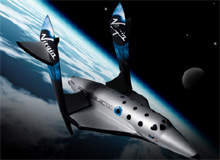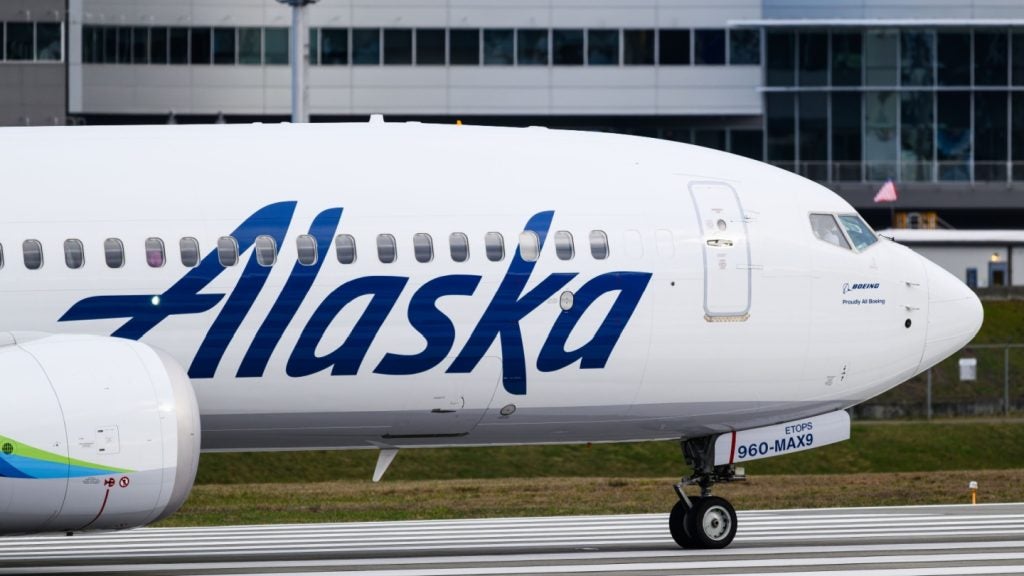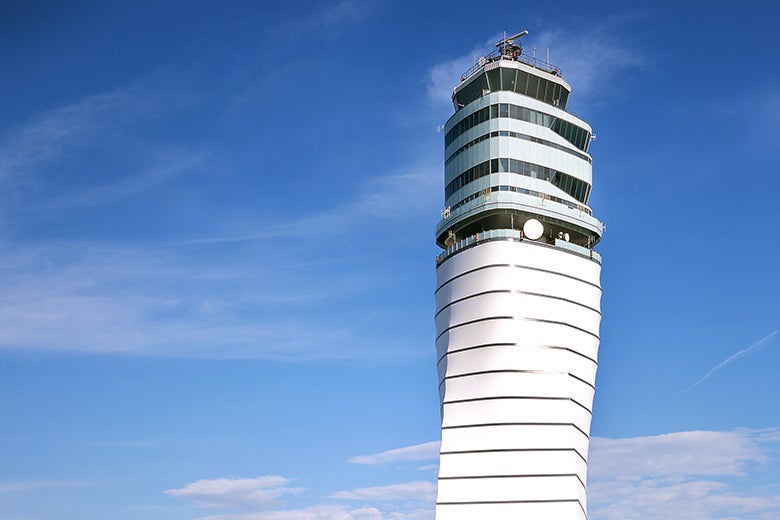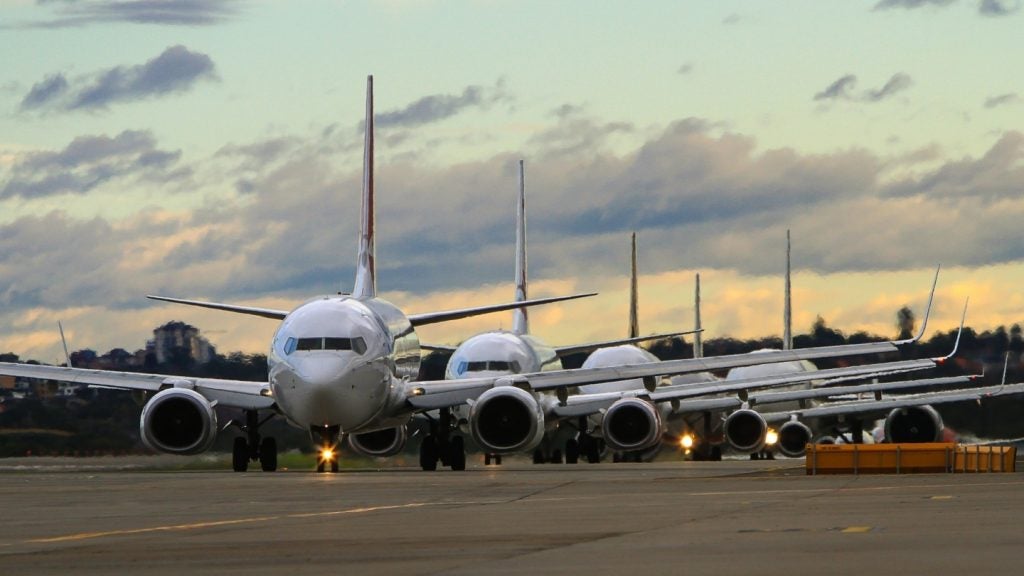
It sounds like a line from science fiction or a satirical 1990s animated film, but the plans are moving off the drawing board and it’s real.
In the south-west US state of New Mexico, 45 miles north-east of Las Cruces, the local spaceport (there are other, non-commercial operations in places such as California’s Mojave desert) was renamed Spaceport America in 2004 and will be Virgin Galactic’s world headquarters and mission control for public outer-space travel.
Construction of a 100,000ft² hangar and terminal facility is expected to begin this year in advance of Virgin Galactic’s commercial space flight operation, slated to start in 2010. Bookings for the flights, which cost $200,000 per person for a 2.5-hour flight, are already being sold.
Three space flights have already been launched by fellow Spaceport tenant UP Aerospace – a spaceflight corporation that provides low-cost space access for military purposes and educational projects.
Sitting in near the White Sands Missile Range in New Mexico, the Spaceport enjoys the freedom of being one of the few locations in the US with restricted airspace to infinity.
See Also:
Also, as a premier missile test range, 3,200-square-mile White Sands is prepared to meet the research, development and testing needs of the private sector. The $31m terminal and hangar facility will include Virgin Galactic’s pre- and post-flight training facilities and lounges, maintenance hangar for two of the company’s White Knight Two and five SpaceShipTwo craft as well as house the New Mexico Space Authority (NMSA), according to Spaceport America.
How well do you really know your competitors?
Access the most comprehensive Company Profiles on the market, powered by GlobalData. Save hours of research. Gain competitive edge.

Thank you!
Your download email will arrive shortly
Not ready to buy yet? Download a free sample
We are confident about the unique quality of our Company Profiles. However, we want you to make the most beneficial decision for your business, so we offer a free sample that you can download by submitting the below form
By GlobalDataNew Mexico state authorities say funding for spaceport construction is coming from federal and New Mexico state capital and a local-option gross receipts tax on southern New Mexico voters. New Mexico has agreed to build and lease to Virgin Galactic the customised hangar and training facilities. Richard Branson’s Virgin Galactic outfit will pay the usual airport use-type fees, taking on a 20-year lease.
SPACE-AGE DESIGN
British architecture firm Foster+Partners, run by acclaimed award-winning architect Norman Foster, who created major airports such as Hong Kong’s Chek Lap Kok has taken over the design of the New Mexico Spaceport.
Partnering with US-based URS, SMPC Architects, PHA Consult, Balis and Company, and Exploration-Synthesis Partners, the design has been put together with low-cost eco-friendly benefits in mind, as well as the complexities that come with building in the sinuous sands of New Mexico.
Foster+Partners say their design seeks to capture the thrill of space flight, making as much of the launch visible to spaceport visitors as possible.
It also aims to take advantage of local materials and regional construction techniques with a view to sustainability, in the hope of laying a foundation for future spaceports if, and when space travel demand rises.
“Making minimal impact on the environment, the scheme will be the first facility of its kind and a model for the future,” the company said. “The low-lying form is dug into the landscape to exploit the thermal mass, which buffers the building from the extremes of the New Mexico climate as well as catching the westerly winds for ventilation.”
Skylights will maximise natural light and a glazed façade will be installed in the terminal building allowing for runway views. Photovoltaic panels will provide electricity and water will be recycled.
THE SPACE EXPERIENCE
As seen at Heathrow’s terminal 5, architects today have put a lot of emphasis on how people move throughout airports before their journey. For the spaceport, Foster+Partners say visitors and astronauts will enter the building via a deep channel cut into the landscape. Retaining walls will display regional history alongside that of space exploration, encouraging visitors to reflect on the diverse events that have led to the first instance of space tourism.
“The strong linear axis continues on a galleried level to the ‘superhangar’, which houses the spacecraft and the simulation room, through to the terminal building,” Fosters says.
HOW LONG UNTIL TAKE-OFF?
Construction bids have not been requested at yet but work is expected to start on the Spaceport in July.
Other elements of the spaceport, including roadways, runway, security, water, power and communication systems have been designed by the brains behind several airports and Florida’s Marvel Superhero Island, DMJM. New Mexico-based design consultants are Dekker Perich Sabatini and Molzen-Corbin & Associates.
Spaceport completion is expected in late 2009 or early 2010. Phase I is the programming stage including roads, utilities, and the like. Phase II will involve the full-fledged design.
According to Virgin Galactic, 65,000 people have already put their names down on the waiting list for a spot on their spaceships, which will reach a maximum 110km altitude during the flights. Each flight will carry six passengers, prepared with three days of pre-flight training, and two pilots in a pressurised, airplane-style environment.
“Passengers will be allowed to leave their seats and experience the joys of weightlessness,” according to Virgin Galactic. “Every passenger will have access to large windows which will allow them to enjoy the amazing views – around 1,000 miles in any direction.”
Reclining seats are expected to minimise the effects of g-forces on the passengers during re-entry in the reusable spacecraft, the design of which has been under development for many years. Virgin Galactic plans eventually to do space flight ‘tours’ across the globe – with possible destinations including the UK, Sweden and Australia.
MULTIPLE BENEFICIARIES
A 2007 Innovarium Ventures study found that, just like with an airport, the development of the related new aerospace cluster would benefit cargo operations, spectators and competitions, terrestrial tourism operators, technology providers such as engineering companies, propulsion specialists and avionics firms, and a whole supporting manufacturing and services infrastructure.
A study by analyst firm Futron in 2005 calculated that Spaceport America could create 2,460 jobs and generate $331m of economic activity a year in the construction phase, with 4,300 new jobs expected by 2020, when the suborbital tourism market is tipped to have grown by a factor of 3.5.
Virgin Galactic will be joined by other companies, including Rocket Racing League, Starchaser Industries, UP Aerospace, Microgravity Enterprises and the X Prize Cup, which will be making Spaceport America its headquarters.
Microgravity Enterprises is one of the latest sign-ups for the Spaceport America dream.
Microgravity vice president Linda Strine said it planned space-based production and manufacturing of pharmaceuticals and special materials. It has also set up the ACCESS for Education corporation, a not-for-profit body that will launch 12 to 15 student experiments into space for free on each commercial rocket.
“We have similar dreams and goals as the other space entrepreneurs out there,” she said. “But in addition, we are committed to opening up space to the classroom.”
NMSA executive director Steve Landeene said more companies are establishing MOUs with Spaceport America. “This project is a reality, and proves that commercial space is the next big thing,” Landeene said in a statement.
Landeene said spaceport planning and design work was almost finished at the time of writing, with the first construction bid package being readied for release. Construction would start once NMSA got its site operator’s licence from the US Federal Aviation Administration (FAA).







